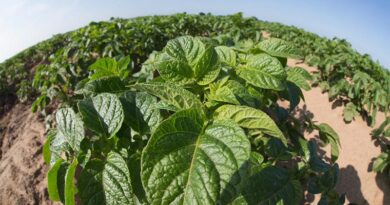More Than Half of Corn Farmers Experiencing Drought Stress This Season, Poll Shows
31 August 2022, Iowa: It’s been another exceptionally dry summer across many parts of the Corn Belt, and as farmers prepare for harvest, they are anxiously scouting crops for signs of drought stress. A recent Pioneer poll of nearly 500 corn farmers shows that more than half said they were dealing with moderate to severe drought stress this season.
While only rain can change fortunes at this point, planning for next year can help ensure fields are more resilient. According to Dan Berning, Pioneer Agronomy Manager for the Western Commercial Unit, it starts with understanding the effects of drought stress.
“Under moderate stress levels, we can see shorter plants or smaller leaves if it occurs during the vegetative growth stage. We may miss a few kernels if it occurs during the pollination period. At grain fill timing, we’ll tend to see less kernel depth,” Berning said. “Under severe drought stress, we can really begin to see the plant tissues of the leaves scald or flash. We can also frequently see nutrient deficiencies like nitrogen or potassium because the plant isn’t able to pull up enough moisture through the roots and bring those nutrients with it. Under severe stress, we’ll even see premature death.”
Another consideration is the growth stage of the plant when the drought stress occurs.
“A number of research studies have shown that the most detrimental window of drought stress occurs during the flowering, while pollinating, and even into the early kernel set,” Berning said. “When more severe drought stress happens at that stage, we can regularly see 50% yield loss.”
Generally, most drought stress occurs in the latter half of the growing season, when the corn’s demand for water is the highest. But outside of irrigation or rain, there isn’t much that can be done to alleviate stress at that point. Early season drought stress is less common and usually less detrimental to corn yield, but there are effective ways to keep it from negatively impacting the crop and ultimately set up corn for better success later in the season.
Leading into 2023, Berning shared five tips to help reduce the risk of drought affecting cornfields next season:
- Residue is important. Residue helps reduce water loss through evaporation and protect soil from wind. Reduce spring tillage, if possible, to preserve soil moisture.
- Plant deep enough. Soil near the surface dries more quickly, which can intensify problems. Target a depth of 2” to 3” in most situations and make sure to plant into moisture.
- Watch fertility – especially potassium. Less soil moisture can mean less nutrient uptake. Potassium deficiency can be exacerbated by drought stress.
- Relieve other stresses. Protect plants from additional stresses like disease, weed competition and insects.
- Select drought-tolerant hybrids: Pioneer® brand Optimum® AQUAmax® hybrids include key traits designed to help protect against yield loss and use less water per bushel produced.
“Pioneer’s new class of hybrids continue to get better and raise that bar higher — on average, genetic gain for drought tolerance has improved about a score to a score and a half over the last decade,” Berning said. “This means that hybrids that would have scored an eight for drought tolerance a decade ago, would now be scored closer to a six or a seven if they were being advanced to commercial status today.”
Pioneer breeders score advancing drought-tolerant hybrids on a scale of one to nine, with nine being the highest drought tolerance score.
Growers can find additional resources on drought management by visiting the Drought Management & Solutions page on Pioneer.com, or by contacting their local Pioneer field agronomist.
(For Latest Agriculture News & Updates, follow Krishak Jagat on Google News)















